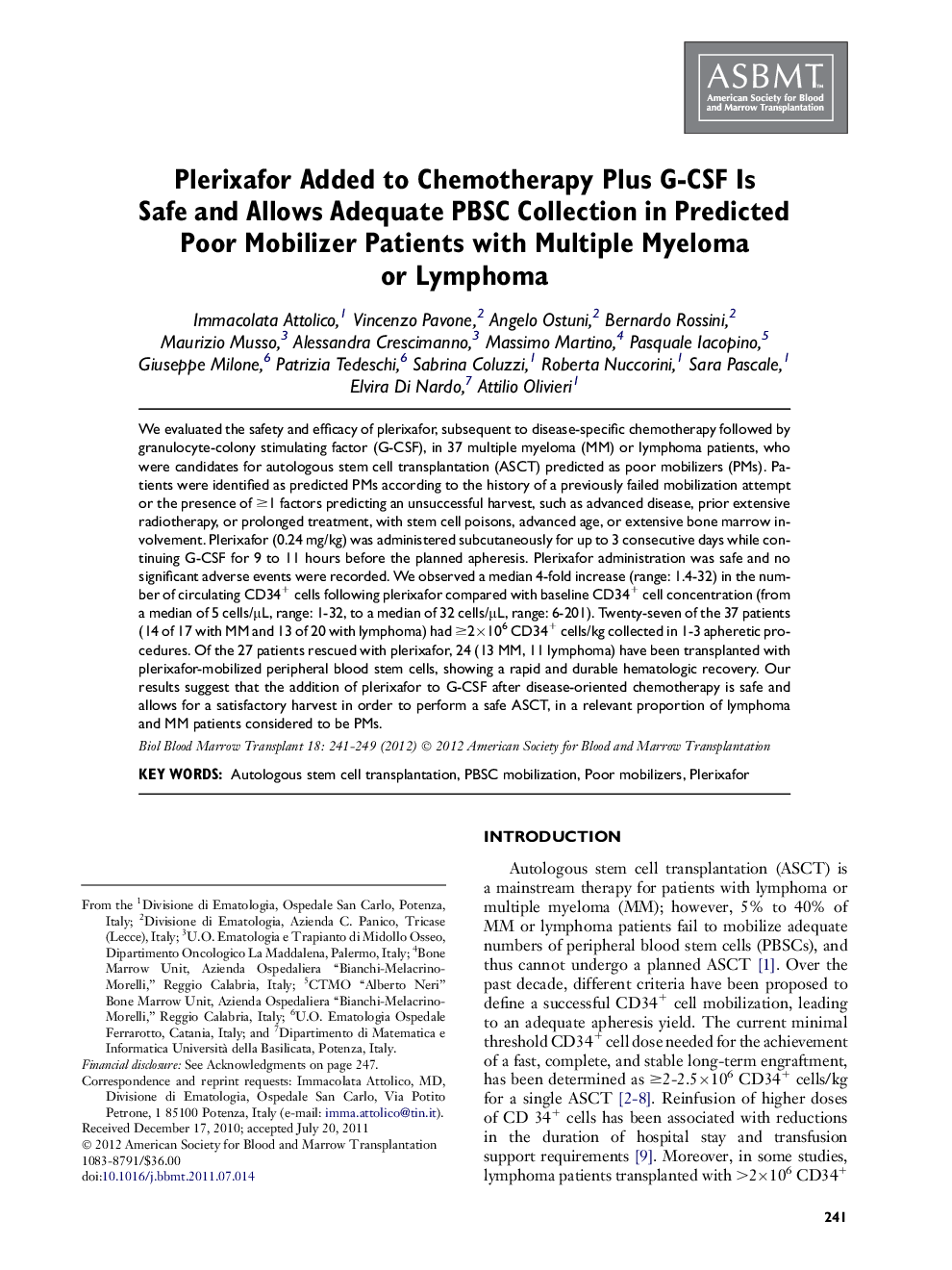| Article ID | Journal | Published Year | Pages | File Type |
|---|---|---|---|---|
| 2103095 | Biology of Blood and Marrow Transplantation | 2012 | 9 Pages |
We evaluated the safety and efficacy of plerixafor, subsequent to disease-specific chemotherapy followed by granulocyte-colony stimulating factor (G-CSF), in 37 multiple myeloma (MM) or lymphoma patients, who were candidates for autologous stem cell transplantation (ASCT) predicted as poor mobilizers (PMs). Patients were identified as predicted PMs according to the history of a previously failed mobilization attempt or the presence of ≥1 factors predicting an unsuccessful harvest, such as advanced disease, prior extensive radiotherapy, or prolonged treatment, with stem cell poisons, advanced age, or extensive bone marrow involvement. Plerixafor (0.24 mg/kg) was administered subcutaneously for up to 3 consecutive days while continuing G-CSF for 9 to 11 hours before the planned apheresis. Plerixafor administration was safe and no significant adverse events were recorded. We observed a median 4-fold increase (range: 1.4-32) in the number of circulating CD34+ cells following plerixafor compared with baseline CD34+ cell concentration (from a median of 5 cells/μL, range: 1-32, to a median of 32 cells/μL, range: 6-201). Twenty-seven of the 37 patients (14 of 17 with MM and 13 of 20 with lymphoma) had ≥2×106 CD34+ cells/kg collected in 1-3 apheretic procedures. Of the 27 patients rescued with plerixafor, 24 (13 MM, 11 lymphoma) have been transplanted with plerixafor-mobilized peripheral blood stem cells, showing a rapid and durable hematologic recovery. Our results suggest that the addition of plerixafor to G-CSF after disease-oriented chemotherapy is safe and allows for a satisfactory harvest in order to perform a safe ASCT, in a relevant proportion of lymphoma and MM patients considered to be PMs.
